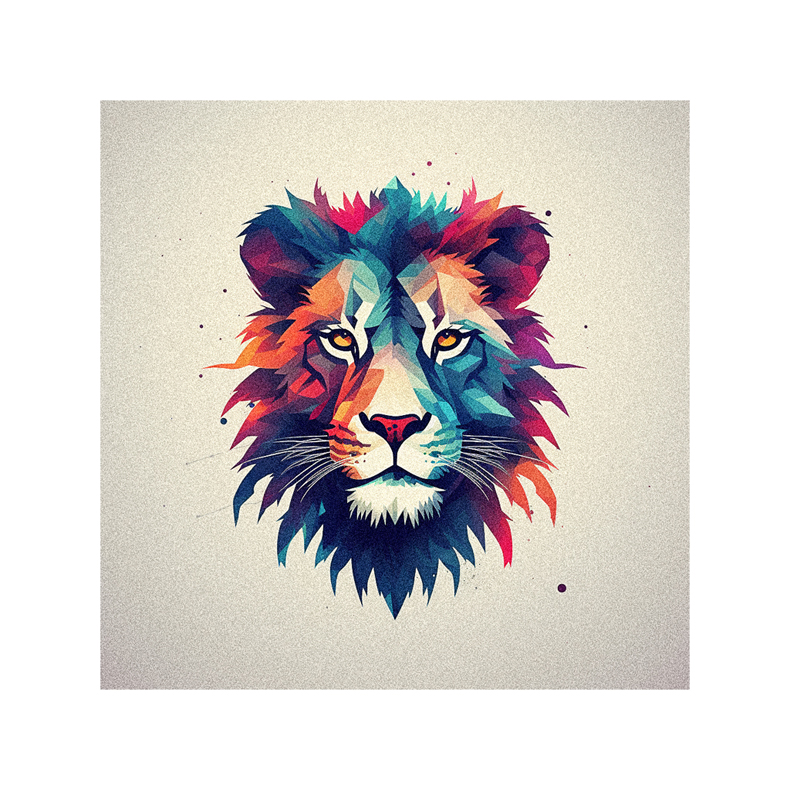Did you know that up to 90% of product snap judgments can be based on color alone?
Color is more than a visual aesthetic – it’s a powerful psychological tool influencing our actions, emotions, and perceptions.
In branding, using color can make your business stand out from the crowd and resonate with your target audience.
This article will delve into the practical applications of color theory in branding. You’ll learn about colors’ emotional impact, their use to create brand identity, and their role in marketing strategy.
We’ll help you choose the right colors while considering cultural contexts and show you how to test their effectiveness.
Finally, we’ll explore case studies like why blue tends to dominate corporate branding and share tips from industry experts.
Let’s start this colorful journey!
Why Color Matters

‘Ever wondered why your heart rate spikes when you see a red ‘Sale’ sign or feel an unusual calmness in a blue-themed spa? Well, it’s no accident; color psychology plays a massive part in shaping our emotions and behaviors, and savvy businesses harness this power to build their brand identity and influence consumer perceptions.
Color can evoke excitement or tranquility, trigger memories, and sway decisions. That’s why choosing the right colors for your brand is crucial. It’s not just about aesthetics; it’s about creating specific associations in the minds of your customers.
Whether you want to convey energy with bold reds or trust with cool blues, applying color theory can help shape how people perceive your brand.’
Emotional Impact of Colors
Imagine stepping into a room painted in soothing blue, and you instantly feel a wave of calmness washing over you. That’s the emotional impact of colors at work. Each color can evoke distinct emotions and reactions.
Fierce red can stir up feelings of passion or urgency, while green often symbolizes growth and renewal. Yellow is associated with happiness and positivity, whereas purple conveys luxury and creativity. Black exudes sophistication and power, but too much can be overwhelming.
Understanding these emotional responses is crucial when choosing your brand’s color palette. It’s not just about aesthetics; it influences how customers perceive your brand personality and their decision to engage with you.
Creating Brand Identity
Crafting a distinctive brand identity isn’t just about having a catchy name or logo; it’s about making intentional decisions that resonate with your target audience.
The strategic use of color is vital to this process. While red might evoke boldness and energy, blue can create a sense of trustworthiness and stability. But remember, it’s more than just picking a color – it’s about selecting the right shade and tone that aligns with your brand personality.
Consider your industry trends, digital presence, and overall brand strategy when choosing colors. Remember the cultural context as well – different colors may have varying significance across cultures.
A thoughtful approach to applying color theory can greatly enhance your branding efforts and leave a lasting impression on your audience.
Color Psychology in Marketing
‘Have you ever considered how a simple shade can influence your customers’ decisions? It’s all part of color psychology, a powerful tool in marketing that taps into the emotional responses elicited by different colors. This is key to creating a brand identity that resonates with your audience.
Here are some practical ways you can apply color psychology:
- Start with an emotion: Determine what feeling you want to evoke, then choose colors accordingly.
- Excitement and passion: Go for bold shades like red or orange.
- Trust and stability: Opt for cool tones like blue or green.
- Keep cultural context in mind: Understand how colors are perceived in different cultures.
- Run tests with your audience: Use A/B testing to find out which hues resonate best.’
Choosing the Right Colors
Selecting the perfect hues for your brand isn’t just about aesthetics; it’s like painting a picture of your company’s personality, values, and promises to your audience.
Your color palette should evoke the emotions you want them to associate with your brand. Are you promoting excitement and energy? Go bold with reds or oranges. Want to symbolize trust and stability? Consider blues or greens.
Remember, cultural context matters too – colors can mean different things in different societies. And don’t forget gender perceptions as well; while men may prefer bolder shades, women often lean towards softer ones.
Your choice of colors can help your brand stand out and be memorable, but always keep your target audience’s preferences in mind when making this vital decision.
Consistency in Branding
Ensuring consistency in your brand’s image is like laying down the foundation of a sturdy building—it gives it strength and longevity. This includes maintaining the same color palette across all your marketing materials, website design, packaging, and customer touchpoints.
Just as a style guide helps to align all aspects of your branding visually, a color palette keeps everything consistent in terms of color. Here’s an example using a 3×4 table:
| Aspect | Primary Color | Secondary Color | Accent Color |
|---|---|---|---|
| Logo | Blue | White | Yellow |
| Website Design | Blue | Grey | Yellow |
| Marketing Material | Blue | White | Red |
This consistency will help reinforce your brand identity and make you instantly recognizable to customers.
Cultural Context Considerations
Don’t forget it’s vital to consider the cultural context when determining your brand’s color palette. Colors can symbolize vastly different things in diverse cultures. For instance, while white signifies purity in Western countries, it represents mourning in some Eastern cultures.
Here are a few tips to take into account:
- Research the symbolism of colors in your target market’s culture.
- Be aware that certain hues might be considered inappropriate or offensive.
- Remember that color associations can change over time and with societal shifts.
- Consider conducting surveys or focus groups to understand your audience’s perceptions.
By understanding cultural nuances related to color psychology, you’ll craft a more effective, resonant branding strategy that truly connects with your audience.
| Color examples | Meanings in different contexts |
| General | Western Culture | Eastern Culture | |
| Blue Cerulean Indigo Royal | Calm Peace Stability Safety Virtue | Trust Loyalty Conservative Authority Depression | Talismanic Healing Femininity |
| Red Maroon Ruby Burgundy | Love Impulsion Aggression Passion Danger/Warning | Power Energy Romance Violence Sensuality | Martyrdom Courage Sacrifice Prosperity Happiness |
| Yellow Lemon Gold Canary | Warmth Cheer Energy Divine Essence | Intelligence Youthful Hope Gentleness Spontaneity Cowardice Faith | Royalty Erotic Courage Imperial |
| Green Forest Lime Olive Green tea | Growth Nature Freshness Vitality Fertility Prosperity | Quality Luck Wealth Hope Magic Deceit Poor Health | Faith Eternity Family Peace |
| Orange Coral Peach Salmon | Warmth Optimism | Creativity Adventure Success Freshness Frivolity Amusement | Sacredness Spirituality Holiness |
| Purple Lavender Mauve Plum | Mystery Magic Bad Fortune Wealth Spirituality | Royalty Nobility Wisdom Imagination Bisexuality | Mourning Privilege |
| Pink Strawberry Cerise Magenta | Love Innocence | Femininity Romance | Marriage Trust |
| Brown Russet Windsor Tan Brown Sugar | Comfort Reliability | Wholesome Health Steadfast Predictable Conservative | Industrious Mourning |
| White Cream Eggshell Ivory | Simplicity Goodness Religion Supernatural Peace | Purity Neutrality Perfection Innocence Cleanliness | Death Gratitude Fertility Mourning Unhappiness |
| Black Ebony Jet Sable | Mystery Death Misfortune Unhappiness Evil Formality | Sophistication Boldness Elegance Magic Supernatural Rebellion | Protection Career Knowledge Penance |
Testing and Measuring Color Impact
While it’s clear as day that colors can elicit myriad reactions, it’s also crucial to remember that the pudding is in the eating – testing and measuring how these hues impact your brand’s performance is where you’ll see their power.
So, how do you go about it? Start with A/B testing, using different color combinations on your marketing materials or website designs. Monitor customer engagement metrics like click-through rates, time spent on a page, and conversion rates. You can even run surveys to get direct feedback from your audience about their perceptions and feelings toward specific color schemes.
Remember, what works for one brand may not work for another. It’s all about finding what resonates best with your specific audience.
Using Blue in Branding
You’ve probably noticed that blue is a popular choice for many brands, and there’s good reason for it! Blue is often associated with trust, stability, and reliability – qualities most businesses want to convey. Its cool tones can also evoke feelings of calmness or serenity.
However, it’s not enough to slap on any shade of blue and expect success. Different shades can project different emotions. Consider this table:
| Shade | Emotion Evoked | Example Brand |
|---|---|---|
| Light Blue | Peacefulness, Health | Oral-B |
| Royal Blue | Trustworthiness, Dependability | Ford |
| Dark Blue | Professionalism, Security |
Choosing the right shade should align with your brand personality and intended audience perception. Remember to maintain consistency across all platforms!
Tips from Industry Experts
After exploring the impact of blue in branding, let’s now turn our attention to some expert advice. Gathering tips from industry experts can provide invaluable insights for your brand’s color strategy.
- Start with Emotion: Remember, colors evoke emotions and influence customer perception about your brand. Identify the emotion you want to associate with your brand and select colors that reflect those feelings.
- Consistency is Key: Maintain a consistent color palette across all marketing materials, website design, packaging, etc. This helps enhance brand recognition among customers.
- Consider Cultural Context: Colors can have different meanings in different cultures. Be mindful of this when targeting a diverse audience or expanding internationally.
Incorporate these tips into your branding strategy for maximum effect!
Follow us on Pinterest for more tips, tutorials, and artist reviews!





